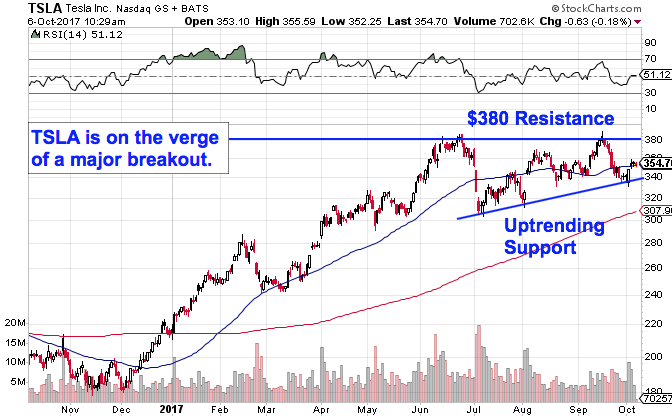
An articulated view of a Discopter in flight, floating through the night sky above the San Francisco Bay. With permission from discopter.com
A version of this post originally appeared on Tedium, a twice-weekly newsletter that hunts for the end of the long tail.
Early in the summer of 1947, an amateur pilot from Idaho named Kenneth Arnold spotted something in the Washington skies that kind of blew his mind.
Despite the skies being clear that day, he saw a series of nine flashes of horizontal light. He landed, told others what he saw, and his story spread through the popular consciousness, taking on a life on its own, as well as a name—the flying saucer.
Two weeks later, a much more famous incident in Roswell, New Mexico, involving a weather balloon (if you believe what the government tells you), further cemented the idea of the flying saucer in the public consciousness.
Not long after, hobbyists of all kinds suddenly felt inspired make their own—and they've been flooding the patent offices globally ever since.
But the guy who got to the U.S. Patent Office first, surprisingly, wasn't actually inspired by the popular perception of the UFO at all. He had the idea, in fact, years before Kenneth Arnold took his fateful flight.

"They did not appear to me to whirl or spin but seemed in fixed position traveling as I have made drawing." From Arnold's account of his UFO sighting. Public Domain
The Dutch painter and sculpture artist Alexander Weygers, who grew up in the Dutch East Indies—now Indonesia—and spent most of his adult life in the U.S., was something of a 20th-century Leonardo da Vinci. He had both an engineering and artistic background, and his work spanned sculpture, illustrations, photography, and many other fields.
In 1927, he conceptualized a device that predicted the infatuation with flying saucers before they even had that name. And as an engineer, he did so with a practical eye toward the failings of the device he hoped to replace.
"Helicopters are vulnerable," he said in an interview with UPI in 1985. "People were being killed in them during the 1920s. They go down like a brick. The saucer became the logical answer."
His creativity was driven by tragedy. In 1928, his wife died during childbirth, as did his son. The painful incident ended up pushing him closer to art, with the losses inspiring some of his most notable sculptures.
A similar tragedy—the capture of his family, still in the Dutch East Indies, by Japanese forces during World War II—pushed him in the early 1940s to complete his saucer project, which he had first started in the 1920s. He called the device a "Discopter."
The idea was inspired not by spaceships or science fiction, but by a practical desire to create a vehicle that could be used to rescue people in incidents not unlike the one that faced his family members. His frame of reference was his own prior work.

Weygers' patent for his Discopter. Google Patents/ US2377835A
He filed for a patent in 1944, and that patent was granted the next year. A key passage from that patent:
To a helicopter, a craft constructed on the principles of my invention bears a superficial resemblance in that both types are sustained by at least one horizontal rotor. From this point on, however, all similarity between the two types of flying craft ends. A craft embodying my invention is distinguished from a helicopter in that the rotor or rotors in my craft are enclosed within a substantially vertical tunnel, the rotor regarded as a whole is mainshaftless and the external form of the craft is not very different from the familiar discus of the athlete, in common with which the craft enjoys certain aerodynamic advantages characteristic of the passage of the discus thru the air. Not only the rotors and power plant compartments but all of the usual moving and fixed protruding parts, present in both airplanes and helicopters, such as stabilizing and directing means and otherwise, are entirely enclosed within the strikingly simple and cleanly streamlined contour line of the craft when regarded from exteriorly thereof in any elevation view, thereby concealing from the casual view such parts.
Alexander Weygers wasn't trying to invent the flying saucer. He was trying to reinvent the helicopter, along with aviation in general, so that it could be used more practically. (It should be noted that the device was never built.)
But the existence of everything that came afterwards meant that his name would forever be associated with futurism and science fiction, elements that didn't actually inspire his invention.

Weygers envisioned large passenger ships with windows all the way around the edge of the disc. With permission from discopter.com
Soon after the flying saucer hit the public consciousness in the late 1940s, people noticed what Weygers had done. A 1950 article in the Allentown, Pennsylvania, Morning Call, dedicated column space to a dentist named Dr. Harold T. Frendt, who used the existence of the patent to argue against the existence of aliens. Frendt suggested that the patents were being used to create these saucers, despite his only evidence being Weygers' patent.
"They should be operated at high altitudes instead of exposing them for observation to the general public and the pro-communistically inclined, and thereby stimulating a trend of foolish speculation," Frendt told the newspaper at the time.
Frendt's statement is ironic, because he's also speculating. There probably was no flying saucer.
While Weygers was certainly first, the folks that followed him clearly were inspired by whatever happened in Washington and New Mexico back in 1947, perhaps with a little touch of H.G. Wells in the mix as well.

Reporting on Roswell. Public Domain
As soon as there was a popular "spark," the inspiration that had us looking up in the sky and wondering what if, the saucer was everywhere. It's been keeping patent offices around the world busy ever since—first, with a spate of flying saucer toys in the early 1950s that looked like frisbees, and soon, in the form of aircraft clearly inspired by flying saucers, like this 1953 design and this helicopter/flying saucer hybrid.
Buried in the USPTO's many classifications for airplanes and helicopters is the indexing code "B64C 39/001," which represents "flying vehicles characterised by sustainment without aerodynamic lift, often flying disks having a UFO-shape." Yes, USPTO got so many patent applications for flying saucers that it earned its own classification.
So how many flying saucer patents are we talking about? According to Google Patents, around 192 items in this specific classification are listed as being produced in the U.S., with three particular surges in their creation—an initial jump in the years between 1953 and 1956, a second wind between 1965 and 1971, and an unusually dramatic surge in such inventions between the years 2001 and 2004. USPTO handled 37 flying saucer-related patents during that particularly busy time in U.S. diplomatic history.
There's a lot to look at, and it's entirely possible that due to the complexity of the patent system, this doesn't cover everything. Fortunately, someone with a pseudonym and apparently a large amount of time already did a huge amount of curation for you.
Earlier this year, an Internet Archive user named Superboy collected more than 100 flying saucer patent filings spanning the past 75 years or so. It took the user over three months to gather the documents from the U.S. patent offices and other patent offices globally, and is split up over two pages.
(Superboy helpfully noted that the documents prove "that humans have obtained and incorporated flying saucers for personal and secret use.")
Some of the patents look like massive frisbees; others like tiny, squat planets; and others still look like they've taken clear inspiration from movies set in space. (And of course, Weygers' groundbreaking craft made the list. It had to.)
Most patents were credited to individuals, with a handful of companies involved.

The patent document for this 2003 invention describes it as a "ring-shaped wing helicopter, which is similar to a flying saucer in appearance." Google Patents/ US 20030122033 A1
The weirdest such applications—though eventually withdrawn—came from a man named John Quincy St. Clair. People have been wondering about St. Clair for years. During the 2000s, he filed for for dozens of patents for all sorts of bizarre things. (It should be noted that filing for a patent isn't cheap, even if it's withdrawn.) Among his greatest hits: a "magnetic vortex wormhole generator" and a "walking through walls training system," which comes complete with instructions on how to print the "training system" using a home printer.
One of his applications, from 2006, was for something called a "photon spacecraft." "This invention is a spacecraft propulsion system that employs photon particles to generate a field of negative energy in order to produce lift on the hull," he wrote.
Of course, not every flying saucer patent has been produced by a hobbyist, an eccentric inventor, or an engineer who turned tragedy into creativity.

San Francisco's future, according to Weygers. With permission from discopter.com
Some of the largest companies in the world have occasionally taken interest in the flying saucer idea. In 2014, for example, Airbus invented a device that has a lot in common with the modern flying saucer, but also looks like a stealth fighter jet with a donut in the middle.
As CNBC reported at the time, it wasn't intended for either outer space or the military—it was a reinvention of the passenger jet that was intended to help reduce cabin pressure. And there's a good chance we'll never even see it.
"It's just one of many ideas," a company spokesman told Fortune. "It doesn't mean that we're going to be working on making it a reality."
That actually sounds somewhat sedated compared to an attempt by the British Rail to patent a spacecraft that relied on "controlled thermonuclear fusion reaction."
And of course, the future may have room for a flying saucer—or at least a flying car—yet. As Bloomberg Businessweek reported last year, Google co-founder Larry Page has been investing in the idea of flying cars for years through his startups Zee.Aero and Kitty Hawk, with Weygers cited as an early inspiration for what could come next.
Earlier this year, Kitty Hawk released a video for a product that, if you squint hard enough, shares a lineage with what Weygers did way back when, with maybe inspiration from all the things that have come along since.
A version of this post originally appeared on Tedium, a twice-weekly newsletter that hunts for the end of the long tail.

Source:
The Long, Strange History of People Filing Flying Saucer Patents
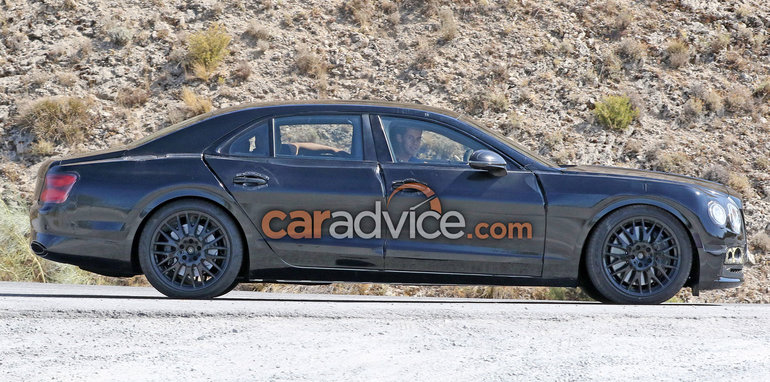

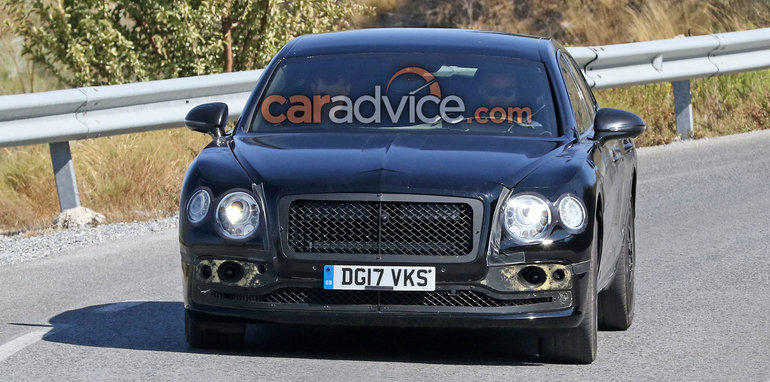
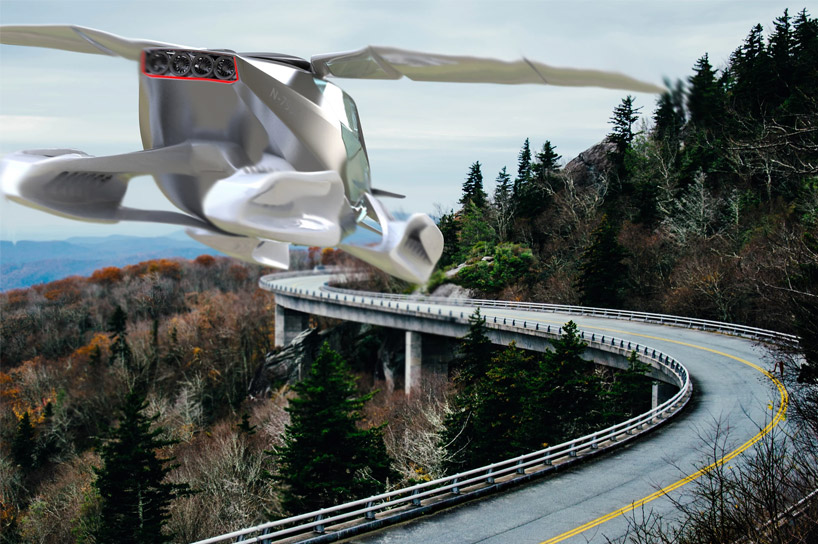 personal door-to-door transportation will be conducted using flying cars, according to hoversurf
personal door-to-door transportation will be conducted using flying cars, according to hoversurf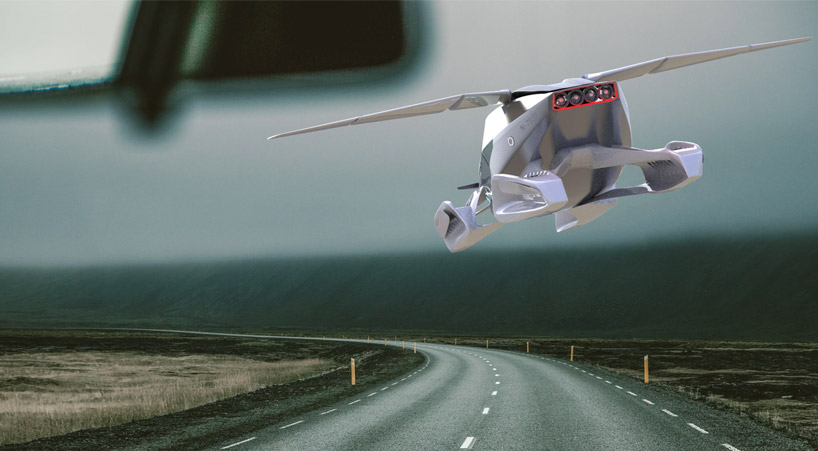 the sleek, modern design of the vehicle will be created using 3D printing
the sleek, modern design of the vehicle will be created using 3D printing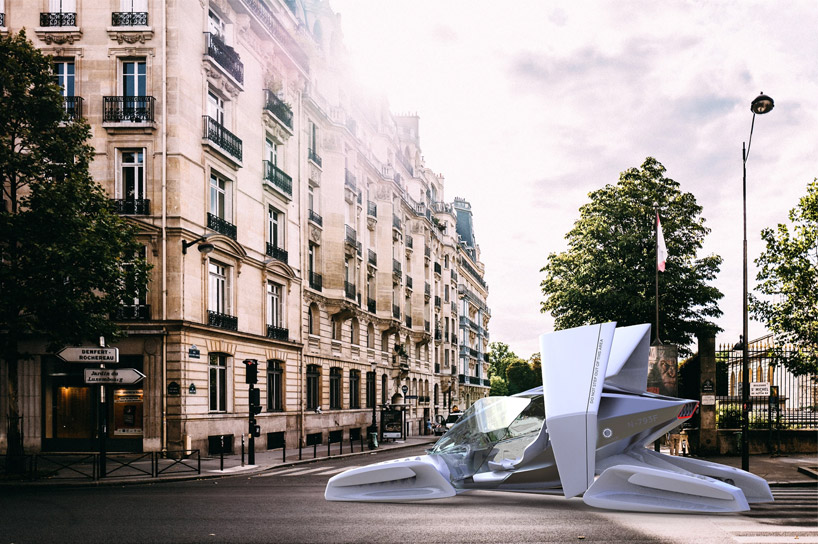 without cars, roads will become pedestrianized and places for VTOLs to park
without cars, roads will become pedestrianized and places for VTOLs to park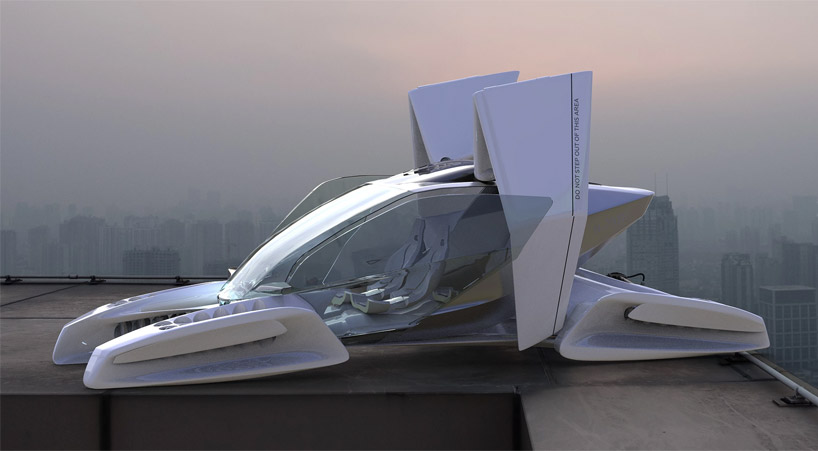 when parked, its wings fold to minimize space
when parked, its wings fold to minimize space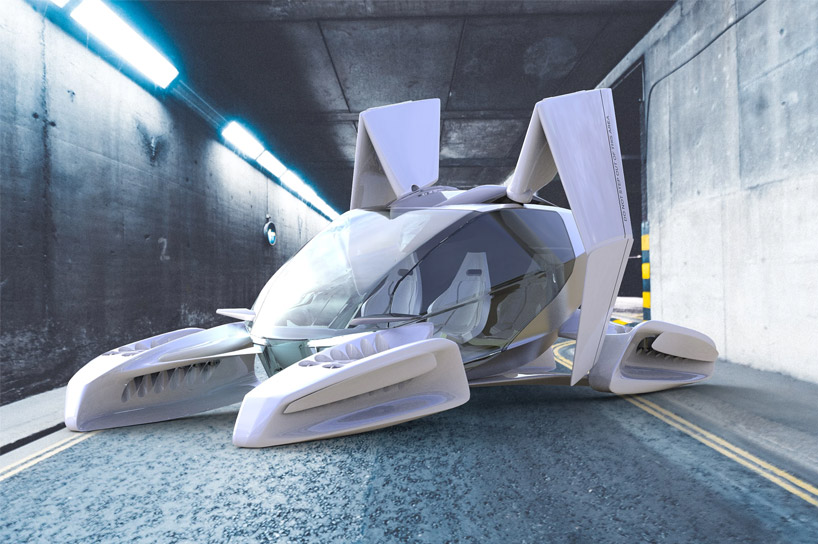 its design and hybrid battery system aims to improve efficiency
its design and hybrid battery system aims to improve efficiency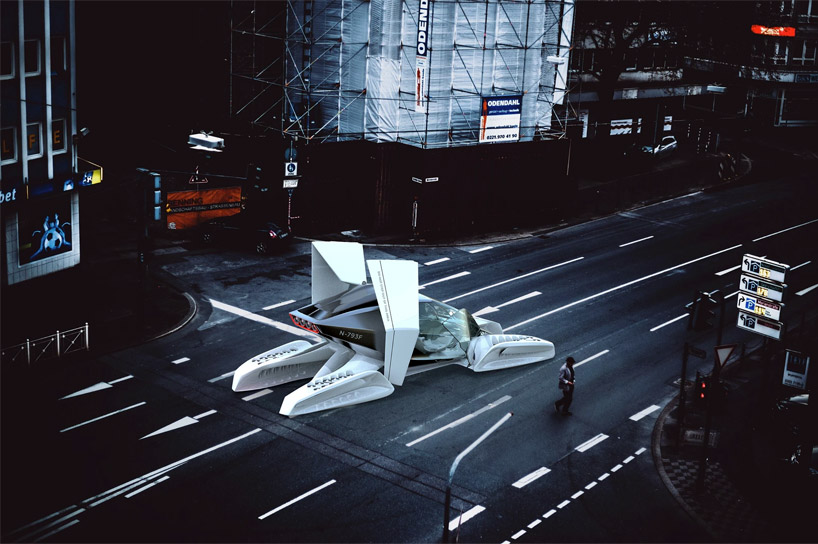 'project formula' enhances 52 turbine propulsion and 48 small electric thrusters
'project formula' enhances 52 turbine propulsion and 48 small electric thrusters An articulated view of a Discopter in flight, floating through the night sky above the San Francisco Bay. With permission from discopter.com
An articulated view of a Discopter in flight, floating through the night sky above the San Francisco Bay. With permission from discopter.com  "They did not appear to me to whirl or spin but seemed in fixed position traveling as I have made drawing." From Arnold's account of his UFO sighting. Public Domain
"They did not appear to me to whirl or spin but seemed in fixed position traveling as I have made drawing." From Arnold's account of his UFO sighting. Public Domain  Weygers' patent for his Discopter. Google Patents/ US2377835A
Weygers' patent for his Discopter. Google Patents/ US2377835A  Weygers envisioned large passenger ships with windows all the way around the edge of the disc. With permission from discopter.com
Weygers envisioned large passenger ships with windows all the way around the edge of the disc. With permission from discopter.com  Reporting on Roswell. Public Domain
Reporting on Roswell. Public Domain  The patent document for this 2003 invention describes it as a "ring-shaped wing helicopter, which is similar to a flying saucer in appearance." Google Patents/ US 20030122033 A1
The patent document for this 2003 invention describes it as a "ring-shaped wing helicopter, which is similar to a flying saucer in appearance." Google Patents/ US 20030122033 A1  San Francisco's future, according to Weygers. With permission from discopter.com
San Francisco's future, according to Weygers. With permission from discopter.com 


 Savvy and sophisticated: Meet China's evolving car buyers Read the article
Savvy and sophisticated: Meet China's evolving car buyers Read the article 

 StudioSmart
StudioSmart

